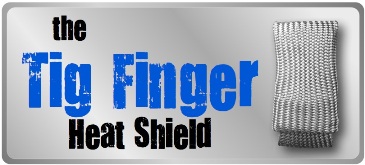Tig Welding Quick Job in the shop
I have created a No BS TIG workbook for you to help you learn to TIG weld...and its free
Download your Free TIG workbook here
Download your Free TIG workbook here
Nothing big going on is the shop today. But this one quick tig welding job came in so what the heck?
The welds were depicted in a drawing detail for some type of lid for a
solvent tank and this is the only weld on the whole drawing.
Often times, welding symbols on drawings are full of errors....and
sometimes there are no welding symbols at all. And sometimes there are
only basic welding symbols but no real information on type or size of
weld.
In case you missed last weeks video...here it is again.
- HOME
- TIG WELDING
- Tig Welding
It's a problem sometimes, but sometimes its a blessing. Sometimes the
customer just wants the part to work and does not really care if all the
welds were done exactly to specification. The welding symbols dont
really help in this case .
This is a simple job. A piece of 1/8" thick square tubing welded to
another short piece that acts as a spacer....and that is welded to a
stainless steel spring loaded latch.
Simple.
But we can still find stuff to talk about.
For starters, those flare bevel welding symbols have the weld symbol
placed on the arrow side of the reference line but the arrow is pointing
to the wrong joint.
Like I said earlier, mistakes on welding symbols are pretty common. Its
a lot less common in critical industries like construction of Nuclear
Plants...but it mistakes still happen.
Next is the technique for tack welding. Blasting a quick tack weld
with a tight arc and roughly 1.5 the normal welding amps is a quick
way to fuse joints together with a very small tack weld. ( the fit has
to be tight, and you might want to practice on some scrap to get the
hang of it before tacking live parts)
Next is using a magnet to identify metal. Carbon steel is very magnetic
but stainless steel is non magnetic or slightly magnetic depending on
amount of cold work.
see more tig welding videos
Some stainless steels are pretty darn magnetic (like 301, 410, 15-5,
17-4) but mostly you can get a pretty good idea using a magnet. The
latch was shiny with no plating. That usually means some type of
stainless steel. Using er309L filler rod is a good choice for tig
welding carbon to stainless steel. In fact, that latch could have been
made from a variety of alloys and 309 rod would still work. Its a good
rod to have around.
A while back, I did a video on removing a broken exhaust manifold stud
that had a high carbon EZ out broken off in it. I used 309 rod to weld
to the EZout fragments along with the broken stud and it worked great
because the thing about 309 rod is that it wont harden from picking up
carbon from a high carbon bolt or ezout.















